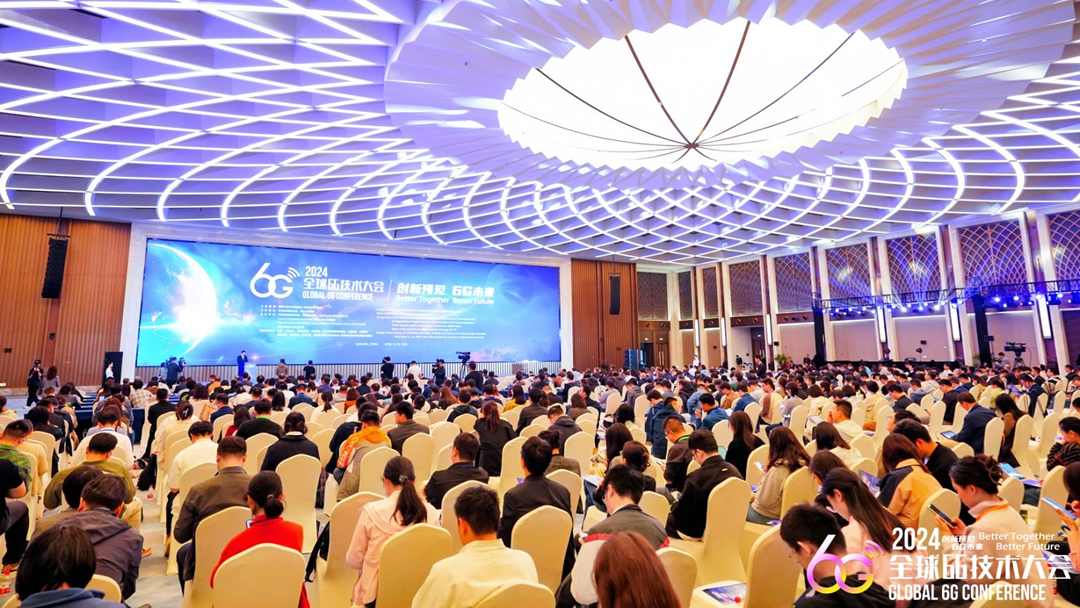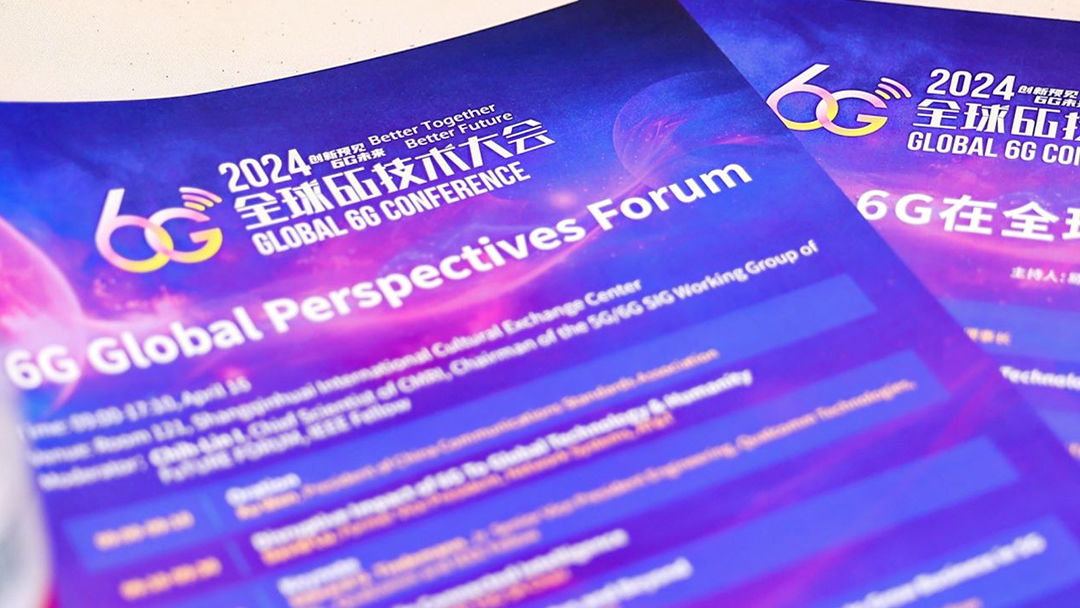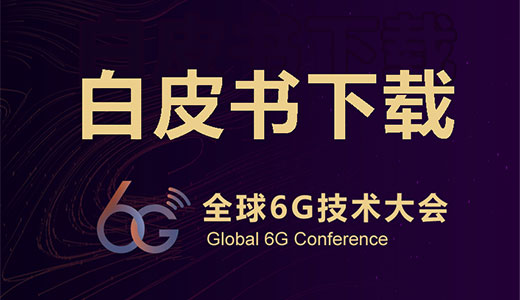Global 6G Conference 2024 Opens in Nanjing
From April 16 to 18, the Global 6G Conference 2024 was held in Nanjing. This grand event was hosted by FuTURE Mobile Communication Forum and Purple Mountain Laboratories under the guidance of the National 6G Technology R&D Promotion Working Group and the General Experts Group.

In June 2023, the International Telecommunication Union (ITU) released the Framework and Overall Objectives of the Future Development of IMT for 2030 and Beyond. In March 2024, the 6G standardization schedule of 3rd Generation Partnership Project (3GPP) was finalized, marking a new era of research and development in 6G technology. Under the theme of “Better Together, Better Future”, the conference aims to organize discussions on the future blueprint of 6G technologies and business and promote global consensus before the launch of 6G standards following the guidance of ITU's 6G vision.
Xia Xinmin, Vice Governor of Jiangsu Province, Deng Zhiyi, Member of the Standing Committee of the CPC Nanjing Municipal Committee and Deputy Mayor of Nanjing, Qiu Gang, Deputy Director-General of the Department of Major Science and Technology Project at the Ministry of Science and Technology, and Wu Hequan, Chairman of the Advisory Committee of the Conference and Academician of the Chinese Academy of Engineering, participated in the opening ceremony held on July 17 and delivered speeches. You Xiaohu, Academician of the Chinese Academy of Sciences, Director of Purple Mountain Laboratories, and Vice President and Secretary-General of FuTURE Mobile Communication Forum delivered a keynote speech.
In his speech, Wu Hequan emphasized that 6G technology must cater to the diverse demands of individuals, computers, and devices. Communication sensing should accommodate a wide range of scenarios while considering the multifaceted requirements such as bandwidth, latency, energy efficiency, and cost. Given the formidable challenges posed by 6G technology, the need for internationally unified high-level standards becomes increasingly urgent. Trying to establish satisfactory standards in isolation is impractical; therefore, collaborative brainstorming represents the optimal approach. Wu Hequan underscored the necessity of fostering a better open ecosystem for international 6G collaboration and earning global respect by showcasing our cutting-edge technology in international partnerships.
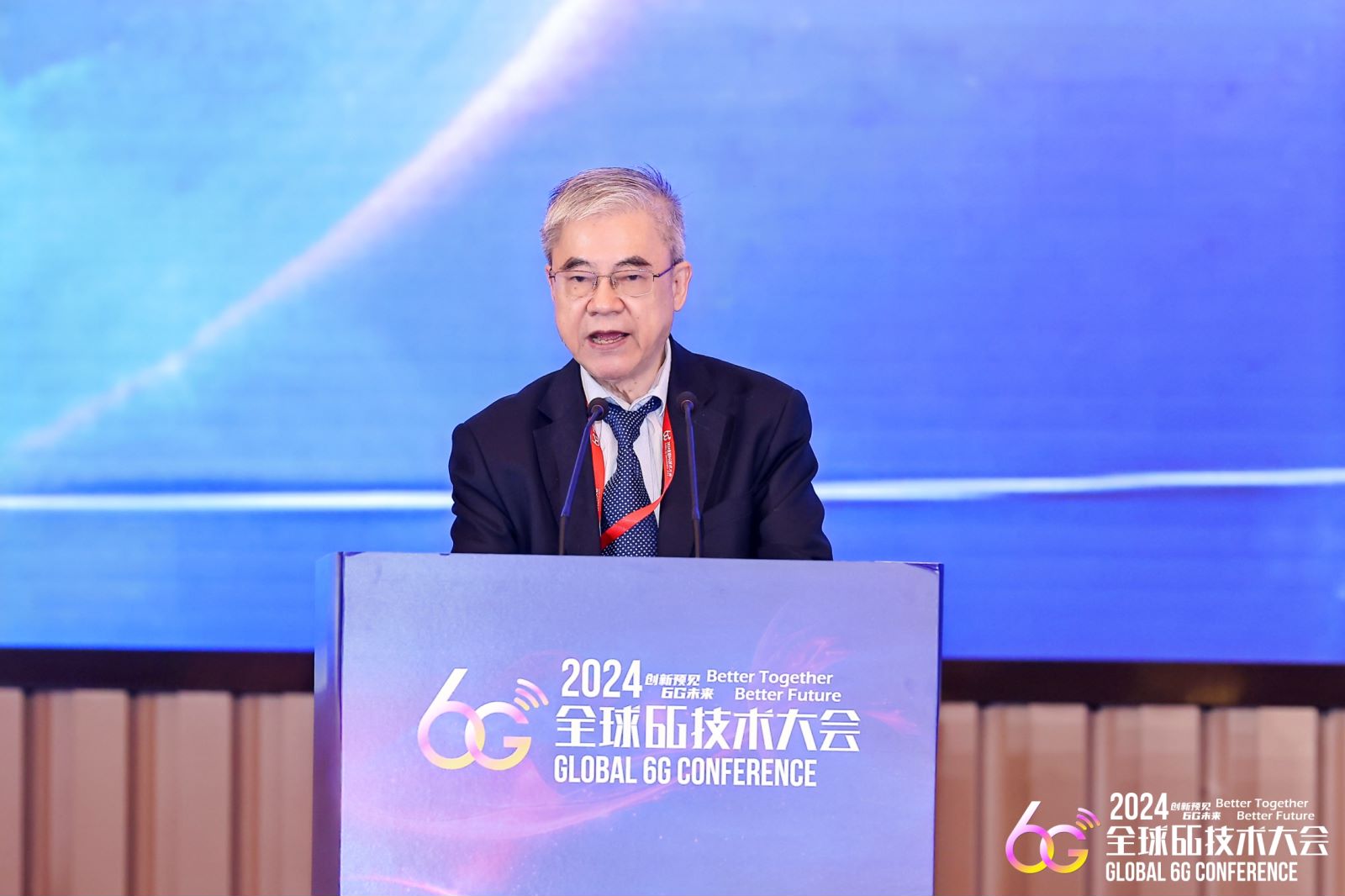
In his keynote speech titled “How to Achieve Harmony between AI and 6G”, You Xiaohu proposed a new pathway for the deep integration of 6G communication and AI within green development, fostering further advancements in the innovative application of intelligent 6G technology. The speech highlighted that AI will empower 6G to attain network autonomy, yet it will encounter challenges related to green development needs, real-time demands, and uncertain performance. You Xiaohu pointed out that developing native artificial intelligence based on data knowledge graphs as well as driving intelligent optimization in real-time after identifying and mining critical and small amounts of feature data from wireless big data can efficiently meet the green and real-time requirements of 6G network intelligence. Additionally, further developing feature data-driven network digital twins allows AI methods to conduct performance pre-validation in twins before actual deployment, effectively addressing the performance uncertainty issues of network AI. The research and development team at Purple Mountain Laboratories has achieved millisecond-level green real-time intelligent control and network digital twin capabilities first on its constructed 6G comprehensive test platform. Experiments have shown that the green real-time intelligence mentioned significantly improves system capacity and time delay performance compared to 5G, while significantly enhancing user QoS assurance capabilities. At the same time, it reduces overhead by approximately an order of magnitude compared to traditional methods.
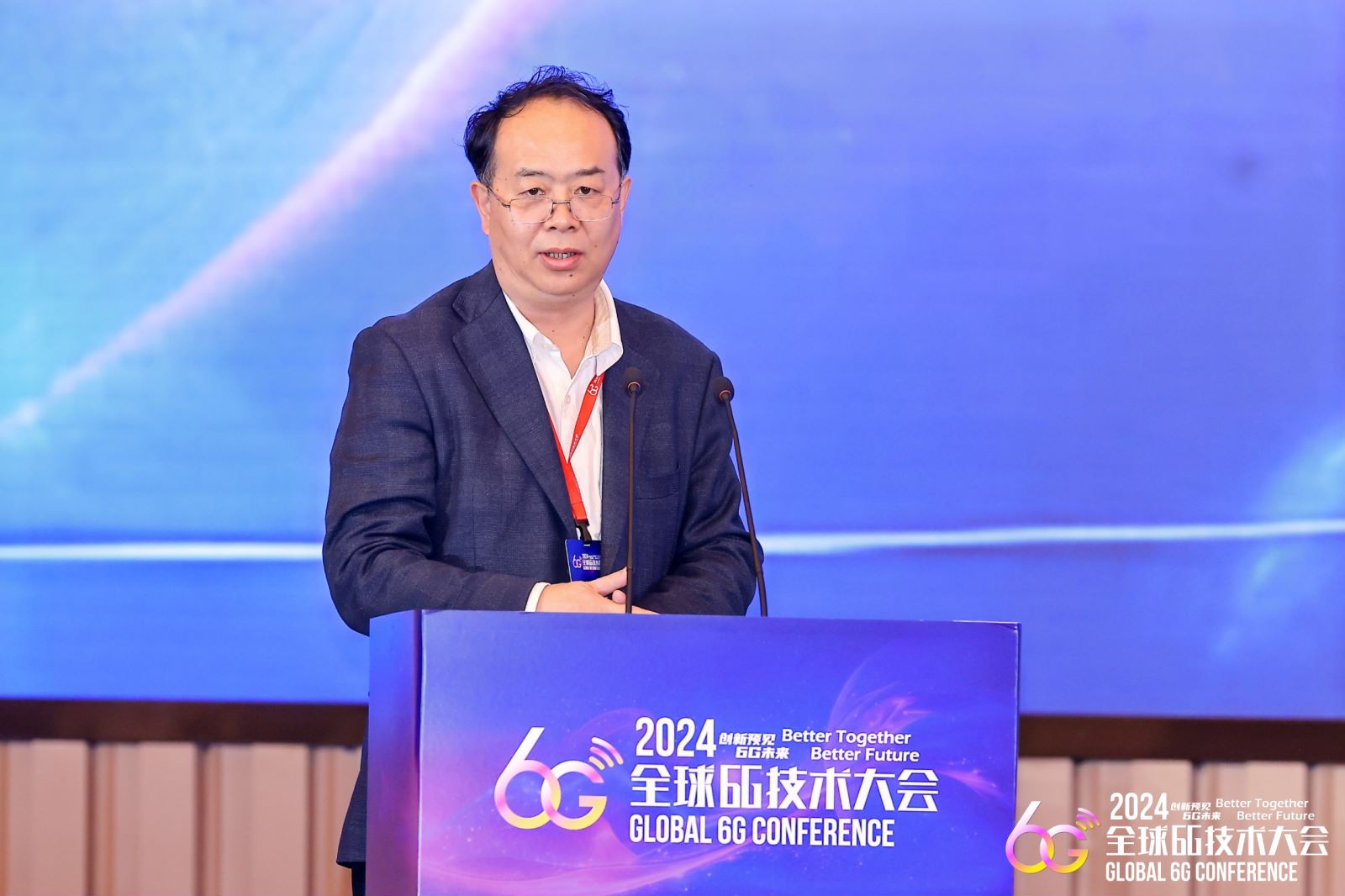
During the opening ceremony, the FuTURE Forum launched the “Initiative to Advance Global Action on Uniform 6G Standards”, advocating for a clear positioning of 6G, in-depth research on new scenarios, and a joint definition of 6G across the industry. It also calls for using the ITU 6G vision as a guide, strengthening the role of 3GPP as the standardization platform for 6G, and promoting the establishment of global unified standards.

The conference format included a main forum at the opening ceremony, invited reports, and roundtable discussions, focusing on 6G vision analysis, global 6G development pathways, and standardization pace, as well as eight cutting-edge directions, namely communications-AI integration, radio ISAC, Integrated Space-Air-Ground, network architecture and key technologies, trust and security, high-frequency-band wireless transmission and devices, future business and application speculations, and new technologies and materials. The conference facilitated in-depth discussions on 6G research and development achievements, promoting advanced innovation and international cooperation in the field of 6G. During the conference, a number of cutting-edge 6G technological achievements were showcased through static graphics and texts, audiovisual content, and physical demonstrations.
The conference gathered top experts from countries and regions including the United States, the United Kingdom, Germany, Sweden, Japan, South Korea, Singapore, the United Arab Emirates, India, and more, creating a diverse platform for exchanges. At the main forum, Professor Gerhard P. Fettweis of Dresden University of Technology in Germany introduced research on 6G reliability improvement and cost optimization; Reinaldo A. Valenzuela, Academician of the National Academy of Engineering (United States), shared 6G vision and technology direction; Khaled Ben Letaief, Senior Advisor to the President of Hong Kong University of Science and Technology, pointed out in his speech that the substantial growth of global mobile traffic and the failure of 5G to meet the needs of organic integration of intelligence, sensing, computing, control and communication have become the driving forces for 6G development; Professor Nambirajan Seshadri from the University of California San Diego mentioned the challenges and innovative ways to integrate advanced technologies like AI into 6G; Wang Jiangzhou, Academician of the Royal Academy of Engineering (United Kingdom), introduced research on improving 6G spectral efficiency to support intelligent interaction, holographic communication, digital twin and other 6G applications from the perspective of near-field communication and sensing technology.
The conference received participation and support from numerous domestic leading experts, including Wu Jiangxing, Academician of the Chinese Academy of Engineering, Liu Yunjie, Academician of the Chinese Academy of Engineering, as well as Honorary Director and Chief Scientist of Purple Mountain Laboratories, Lu Jianhua, Academician of the Chinese Academy of Sciences, Yin Hao, Academician of the Chinese Academy of Sciences, Cui Tiejun, Academician of the Chinese Academy of Sciences, Zhang Ping, Academician of the Chinese Academy of Engineering, among other distinguished academicians, who shared their insightful perspectives.
During the conference, a series of 6G white papers were released, covering various directions such as deep integration of ICDT, 6G network architecture, RIS, semantic communication, GPT and communication, wireless intelligent cloud networks, 6G data plane, edge-native intelligence, intent-driven autonomous networks, quantum information technology, etc., comprehensively demonstrating the research and exploration of the 6G in the information and communication technology field.
To help Jiangsu build an industrial scientific and technological innovation center with global influence and accelerate the formation of new quality productive forces, Zijinshan Science and Technology City released the “6G Technology Leading Future Industry Action Plan” at the conference. The action plan focuses on 3+X key areas, implements six Zijin projects, introduces 10 Zijin policies, and carries out two Zijin recruitment activities to boost the future industrial development led by 6G technology.
As Fu Jun, Deputy Secretary-General of FuTURE Mobile Communication Forum, said, the 6G vision that builds global consensus has been released, but further exploration is needed in terms of 6G development needs and technical routes. Through the important communication platform of the Global 6G Conference, experts, scholars, and industry leaders from all over the world can share the latest research results, promote the sharing and integration of global 6G R&D resources, pool global wisdom, promote the formation of a unified consensus, and jointly promote win-win cooperation between future industries and service applications of 6G.



